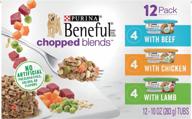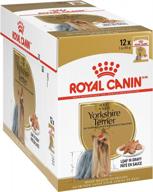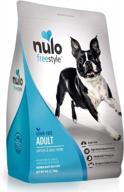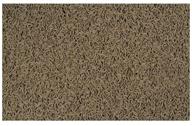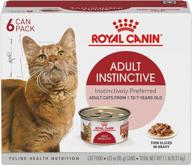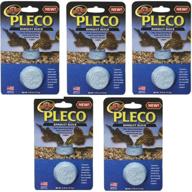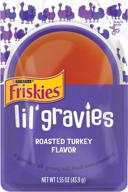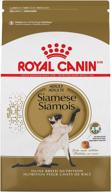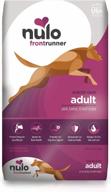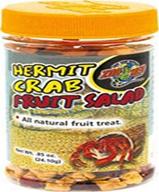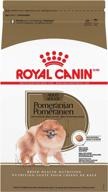Similar products
How to choose the right dry food for your reptile?
Choosing the right dry food is crucial for your reptile's health. Here are some tips on how to select the best dry food for your reptile:
Consider your reptile's species
Different reptile species have different nutritional requirements. For example:
- Lizards need diets higher in proteins and fats
- Turtles need more plant-based nutrients
- Snakes need diets rich in whole prey proteins
Look for dry foods specially formulated for your particular reptile's species.
Read the ingredient list
A quality dry food should have:
- Real meat, fish or egg as the first ingredient
- Whole food sources of carbs like vegetables, fruits and grains
- Vitamins and minerals reptiles need like calcium and vitamin D3
Avoid dry foods with lots of plant protein like soy or corn as fillers.
Get the appropriate food form
Dry foods come in pellets, flakes, powders, chips etc. Pick a texture your reptile will enjoy.
With these tips, you can find a nutritious and appetizing dry food your reptile will thrive on!
How to transition your reptile to a new dry food brand?
Switching your reptile to a new dry food brand should be done gradually to avoid digestive issues. Here are some tips for a smooth transition:
Get them used to the new food's smell
For a few days before switching, place some of the new food in or near your reptile's enclosure. This gets them familiar with the new food's scent.
Top products in 🐸 Reptile & Amphibian Food
Slowly incorporate the new food
Over the course of 1-2 weeks, slowly increase the amount of new food and decrease the old food. Here's a sample phase-in schedule:
| Week 1 | 75% old food, 25% new food |
|---|---|
| Week 2 | 50% old food, 50% new food |
| Week 3 | 25% old food, 75% new food |
Monitor them closely
During the transition, observe your reptile for changes like:
- Lack of appetite
- Loose stool
- Lethargy
If you notice any issues, slow down the transition. Consult a vet if problems persist.
With some patience, your reptile can comfortably switch to a new dry food brand.
How to store dry reptile food properly?
Proper storage is important to keep dry reptile food fresh and nutrient-rich. Follow these tips:
Use an airtight container
Store the food in an airtight plastic, glass or metal container. This prevents:
- Moisture from getting in
- Oils from going rancid
Keep it cool and dry
Find a storage spot away from heat, direct sunlight or humidity. Good options are:
- Pantry
- Cupboard
- Sealed container in the fridge
Heat and moisture cause food to spoil faster.
Another interesting products
Use within expiry period
Check the expiry or best before date and use food before it expires. Dry foods typically last:
- Pellets or flakes: 6-12 months
- Freeze dried foods: 12-18 months
- Powders or supplements: 6-8 months
Expired food has reduced nutritional value.
Keep bugs out
Ensure containers have tight lids. Freeze dried foods are especially prone to pantry pests. Consider adding a bay leaf as a natural insect repellent.
With proper storage, dry food will stay fresh and nourish your reptile.
How to know if your reptile is getting proper nutrition from dry food?
It's important to assess if your reptile is thriving on its dry food diet. Here are some signs of proper nutrition:
Good appetite
A healthy reptile should be eager to eat at mealtimes. Disinterest could signal an issue. For example, bearded dragons are very food-motivated, so lack of appetite can indicate illness.
Proper weight
Weigh your reptile regularly. Sudden weight loss or gain may mean the diet is inappropriate. For instance, if an underweight gecko stops eating fatty insects, it may need higher fat dry foods.
Firm stool
Consistent loose stool or constipation indicates poor nutrient absorption. Optimal digestion means your reptile is absorbing nutrients properly. Certain greens make iguana stool loose, for example.
Active and alert
Lethargy, weakness or sluggishness can result from nutritional deficiencies. An unhealthy chameleon will be less vibrant in color and activity.
Strong muscles/bones
Poor calcium or vitamin D3 intake causes metabolic bone disease. Symptoms like twitching, rubbery legs and bone deformities mean dry foods lack these key nutrients for reptiles.
Make changes if you observe any deficiencies. Consult an exotics vet to pinpoint nutrition issues. With a well-balanced dry food diet, your reptile can thrive!
How to get your picky reptile to eat dry food?
Some reptiles can be quite selective about food. Here are tips to encourage a picky reptile to eat its dry food:
Make it more enticing
Try moistening pellets slightly or mashing them up to bring out the food's aroma. For example, finicky box turtles may accept soaked pellets better. You can also mix in small amounts of favorite fresh foods like berries or greens.
Use mealworms or crickets
Coat live insects with dry food powder to deliver vitamins and minerals. The "chase" can stimulate appetite in some species like anoles who enjoy hunting prey.
Eliminate competing foods
Restrict treats and remove any uneaten fresh foods after 30-60 minutes. Some reptiles like bearded dragons will hold out for tastier options if available.
Try different textures
Switch to chips, flakes or freeze-dried formats if your reptile doesn't like pellets. Crested geckos usually prefer fruit powder mixes, for example.
Reduce stress
Minimize handling and provide secure hides and basking areas. Stress is a major appetite killer for sensitive species like chameleons.
With patience and creativity, you can discover which dry food versions and techniques get your fussy reptile eating. Consult an exotics vet if appetite issues persist despite trying solutions.








